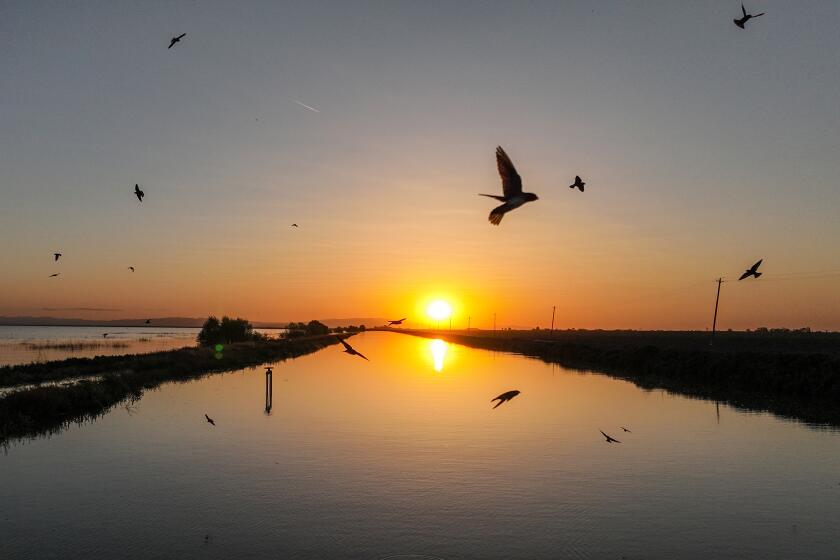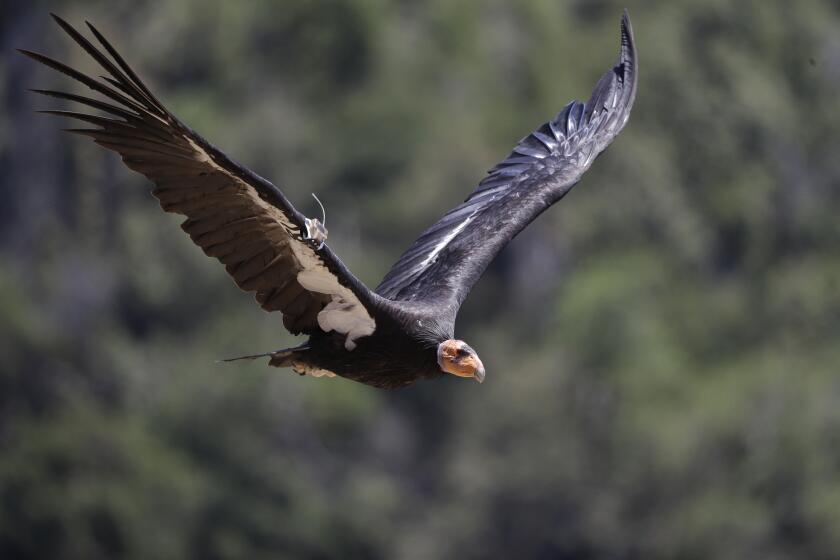These retired teachers started with a little bird guide, and ended with a magnum opus
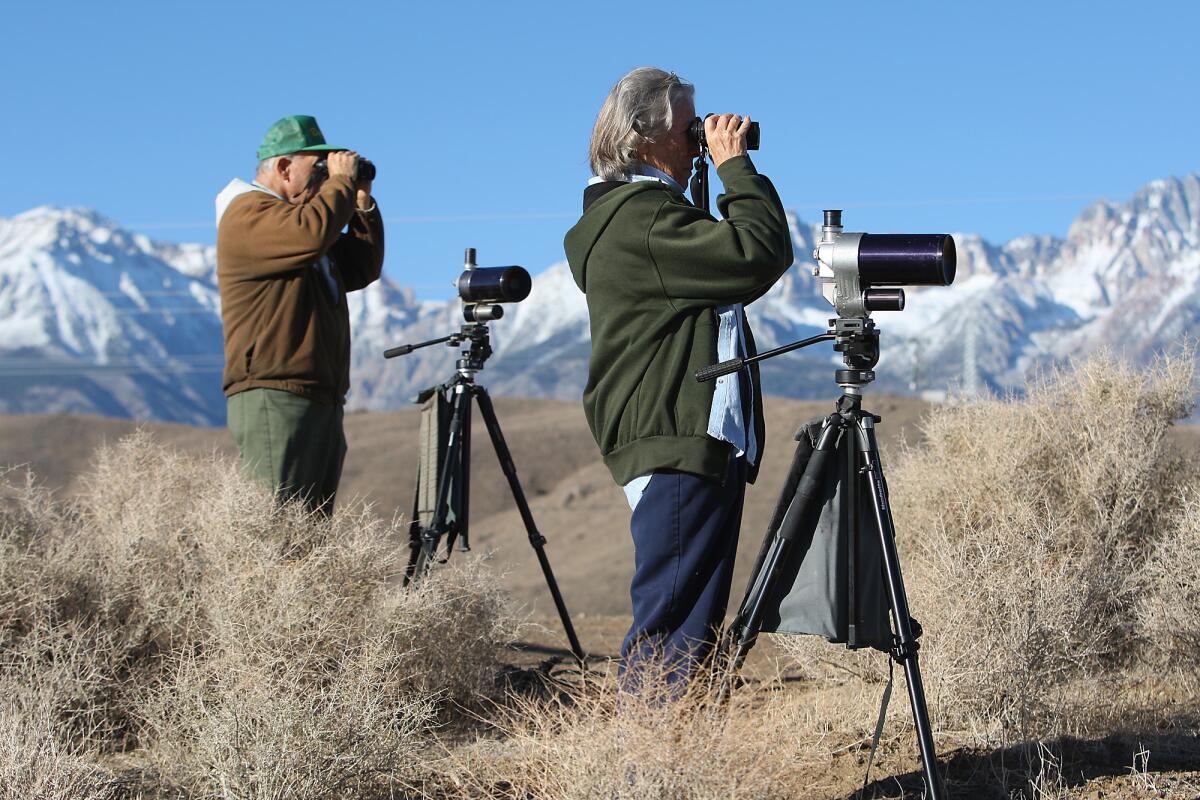
- Share via
BIG PINE, Calif. — Retired high school teachers Tom and Joanne Heindel had spent decades pursuing a daunting challenge in bird science: A survey of every species in Inyo County’s otherworldly tableau of lofty peaks glazed with snow, desert plains, spiky lava fields, rivers and canyonlands.
Armed with notebooks and matching Questar telescopes, they prowled every remote dirt road as far as they could in a 4-wheel-drive truck. They also made a point of visiting sewer ponds, alfalfa fields and fish hatcheries that are footholds for bird life.
Along the way, there was much to learn from each species. Whether it was a great blue heron perched on top of a sand dune or a cactus wren in full song at 10,500 feet in a bristlecone pine forest, they all provided lessons on adaptation to changing ecological conditions in the area southeast of Yosemite National Park, where the eastern Sierra Nevada range and the Mojave Desert collide.
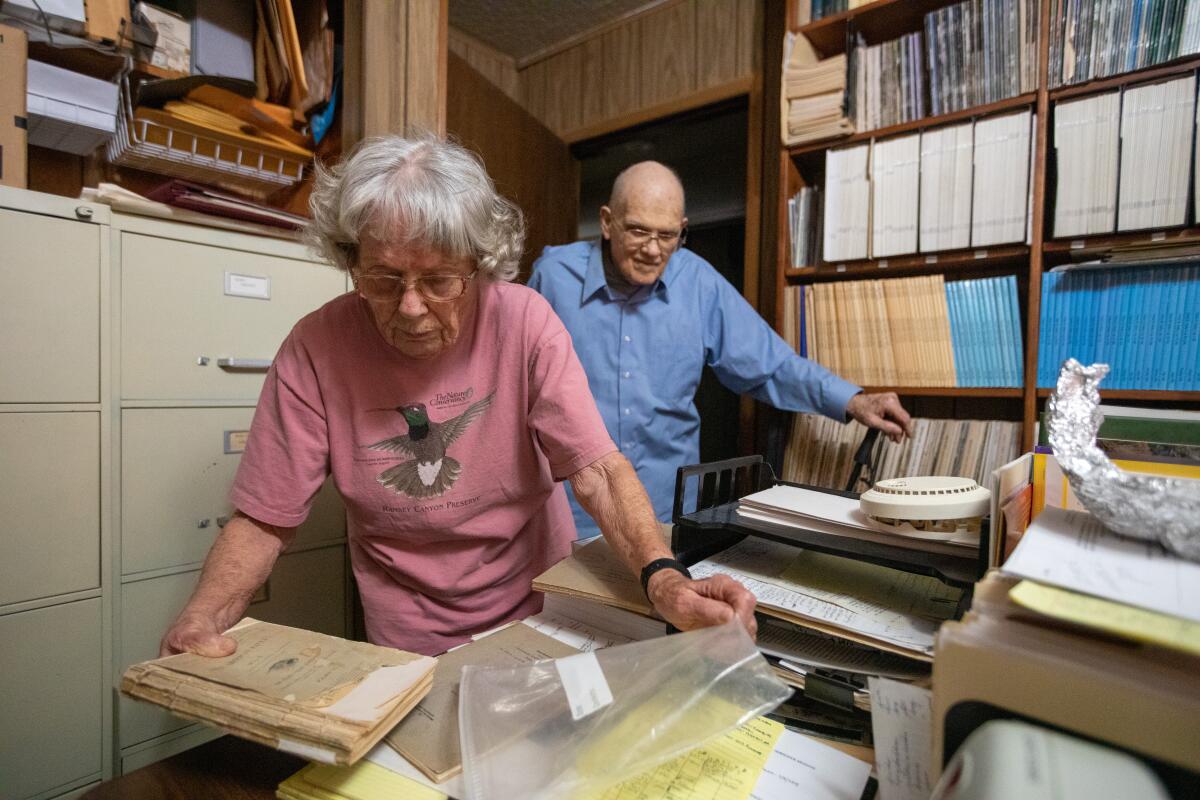
The hope of adding one more rarity or migrant to their book is what attracted them to the wilderness day after day, year after year, and carried them through 69 years of marriage.
Finally, Tom, 87, and his wife, Joanne, 85, have reached the end of a long journey.
Their 500-page book, “Birds of Inyo County, California, including Death Valley National Park,” is expected to be published later this summer by the donor-funded nonprofit Western Field Ornithologists.
“Friends were beginning to wonder if we would ever get it done — and we wondered, too, because we’re getting so damn old!” Tom said with a big toothy smile.
Killer whales have reportedly attacked more than 500 boats in European waters recently. Are they exacting revenge for humanity’s treatment of orcas?
“But deciding when to put the brakes on this project wasn’t easy,” he added, “because we kept finding new species.”
The Heindels’ feat is an unusual accomplishment and a definitive work of its kind, say scientists specializing in California’s avian fauna.

It contains a staggering 500,000 data entries culled from the field, museum archives, scientific studies and the records of government expeditions 150 years ago.
They document the first recorded sightings of 441 species and subspecies, their highest recorded elevation, population densities, relationships, habitats and whether they were residents, migrants, summer visitors or stragglers blown in by a storm. In some cases, they note the date, time, temperature, wind direction and even the make and power of the binoculars and telescopes used by observers.
Yet, to hear Joanne tell it: “There’s so much we didn’t put in the book because there wasn’t enough space.”
The production expenses were paid for through advanced donations from naturalists across the nation.
“This is not a book for weekend birders — it contains tons and tons of astonishingly fine-grained information,” said Kenneth Able, an ornithologist and the book’s primary editor. “But it is important and should be published as a service to ornithology.”
“Editing the minutiae in its pages, however, was enough to fry your brain in 10 minutes,” he added, only half kidding. “I had a big glass of wine after I finished and sent the whole thing over for publication.”
Central Valley flooding has raised a new potential threat to migrating birds: Massive die-offs from bacteria-contaminated water.
The art design on the cover by the Heindels’ daughter, Kelli, 62, features watercolor illustrations by local artist Nancy Overholtz of several species set against a silhouette of Mt. Whitney, the highest mountain in the contiguous U.S. with an elevation of 14,505 feet.
Jon L. Dunn, co-author of the “National Geographic Field Guide to the Birds of North America,” shared his hand-written field notes with the Heindels.
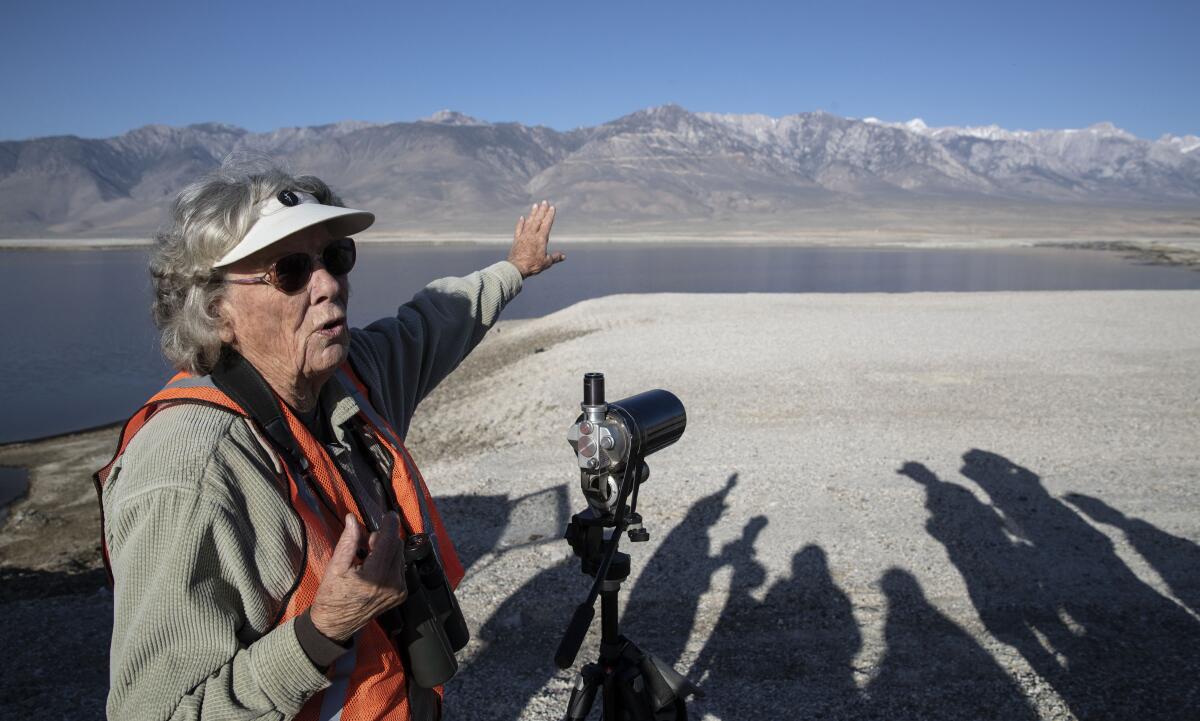
“Exhaustively researched, every ornithological record ever published about Inyo County has been uncovered by the Heindels,” Dunn said. “Their book will be a benchmark that every scientist and resource manager working in the region is going to want to keep within arm’s reach.”
The Los Angeles Department of Water and Power, which acquired much of the land and water rights in Inyo County to build an aqueduct system for the city, about 200 miles to the south, would not argue with any of that.
The DWP donated $1,500 to help fund publication of the book it considers a valuable resource for managing and protecting avian species in one of the largest counties in the state.
Federal wildlife officials have confirmed that an outbreak of avian influenza has killed 21 condors in Arizona and Utah since early March.
With an area of 10,227 square miles and a population of only 18,000, Inyo County encompasses a landscape flanked to the west by the Sierra Nevada range and to the east by the buckled slopes of the White Mountains and the Inyo Mountains, and the forbidding badlands of Death Valley.
“If it’s in Inyo County,” Tom and Joanne Heindel like to say, “we’ve been there.”
The Heindels — like many of the birds they stalk — are a rarity, the embodiment of the naturalists of another era.
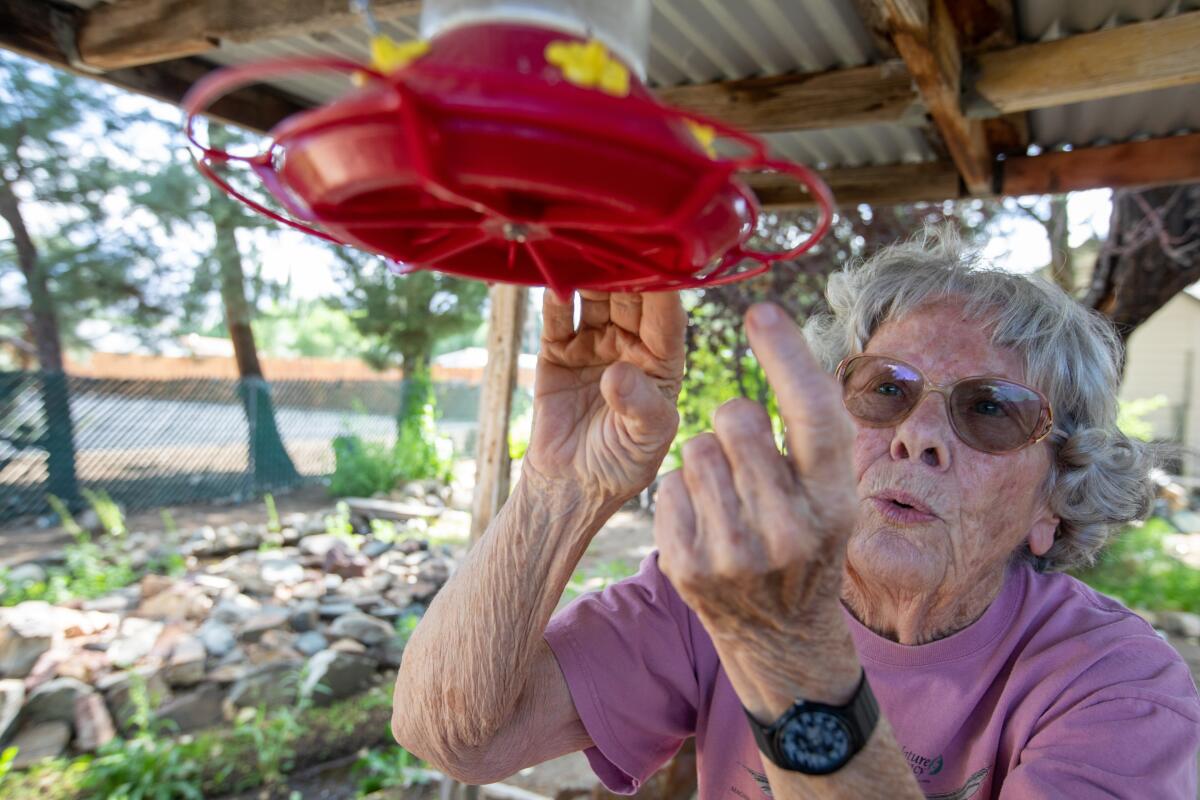
The pair once spent a week combing brushy hills and mesas in the Grapevine Mountains on the eastern edges of Death Valley in hopes of spotting an elusive and rarely seen gray vireo.
No luck. Late one evening, after Tom had fallen asleep in their tent, Joanne played a recording of the bird’s song, a distinctive series of musical chu-wee chu-weet notes.
Moments later, a live bird responded to the call.
“Joanne was pounding on my back and shouting, ‘We found one!” Tom recalled. “I wondered what the hell was going on.”
The next morning, they found two gray vireos only a few hundred yards apart: One on the Nevada side of the border, the other within Inyo County, making it eligible for entry in their book.
Their enduring love affair with birds and each other began one spring day in 1953, while out on their first date: bird-watching in the Santa Monica Mountains.
They left at 6 a.m. and were home by noon.
The first species they identified — a rufous-sided towhee with a velvety black head, bright red and white breast, and ruby eyes — was the first bird Joanne ticked off on her life list.
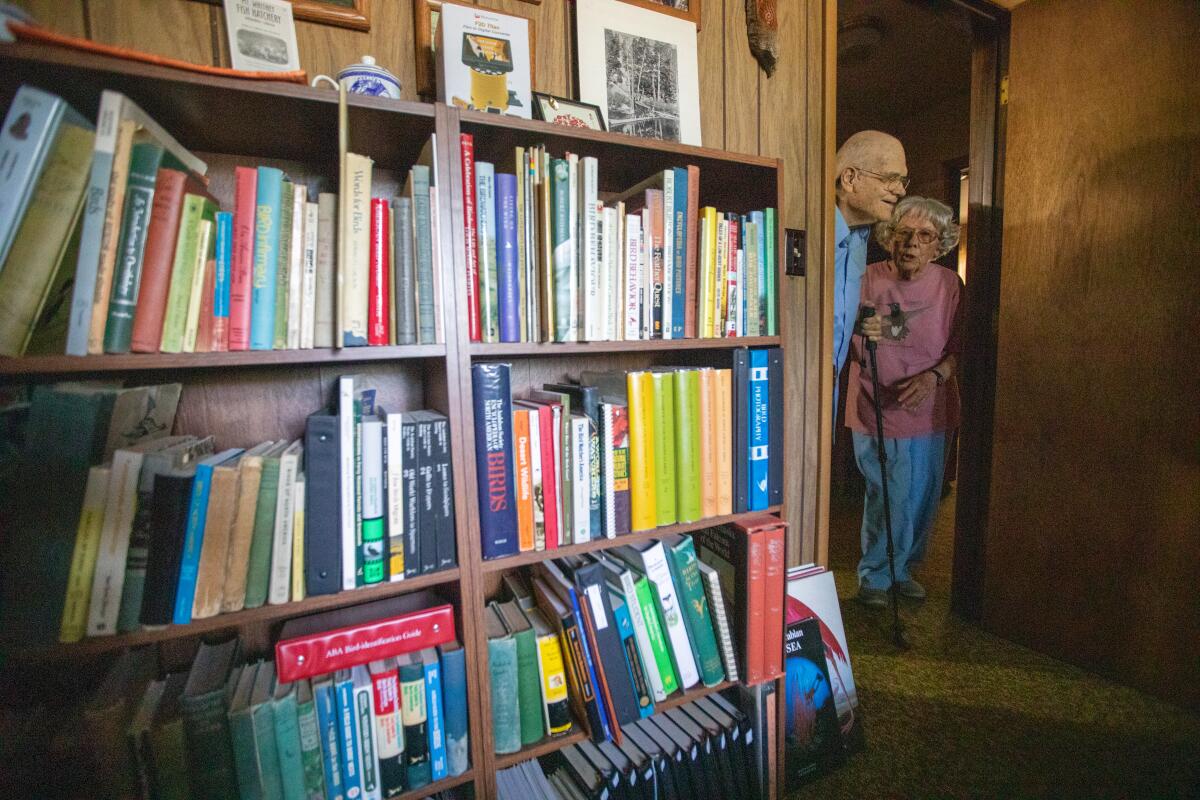
They were still in high school when they married a year later.
After graduation, Tom served in the Air Force until 1958. Both earned teaching credentials at Cal State Long Beach, then moved to the Inyo County community of Big Pine, where they worked as high school teachers from 1972 to 1978.
Six years later, they began landing teaching jobs in South America and Saudi Arabia, where they explored remote oases that were rest stops for migrating birds.
The Heindels moved back to Big Pine in 1990. They have four children — a daughter and three sons — all avid bird-watchers.
How did a dirt parking lot in the San Gabriel Mountains become a major flyway for migrating birds? Scientists can only guess.
They might be unknown to the general public, but their modest home in the Owens Valley community of Big Pine has for years been a gathering place for premier ornithologists and dedicated bird-watchers, many of them trained by the Heindels.
But their most significant contribution began in 1972 as a plan to produce a little guide to the birds of the eastern Sierra Nevada.
Leaning back on a living room sofa, with a pair of binoculars sitting on the armrest, Tom said: “All authors eventually reach a point where they say, ‘This is it. No more. Done.’”
Joanne agreed, up to a point.
“We tried to keep the book as short as we could,” she said. “But a day doesn’t go by that I don’t think, ‘Damn, we should have put this, that or the other in it.’”
More to Read
Sign up for Essential California
The most important California stories and recommendations in your inbox every morning.
You may occasionally receive promotional content from the Los Angeles Times.

